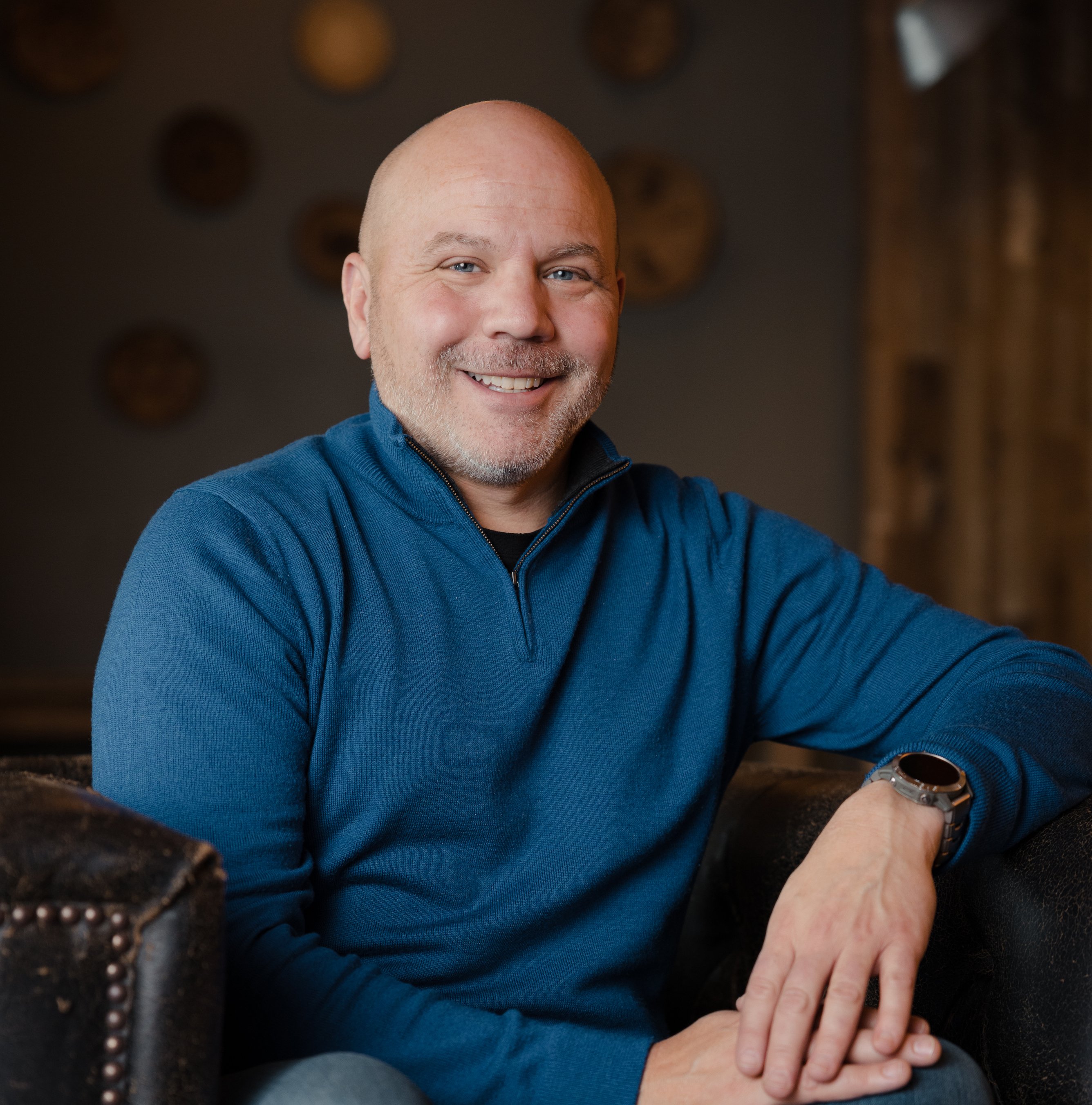Annual Planning with EOS®: How to Align Your Team for Success
I just completed my fourth annual session with a client running on EOS® Powered by Ninety. Their profit this past year was the highest in their 12 years of business, and they credit EOS for their success.
Once a year, EOS enhances one of the quarterly meetings of the 90-Day World® into a two-day annual planning session. Leadership teams use this meeting to create the space and time needed to reflect, recalibrate, and re-energize their organization's journey toward its strategic goals.
Annual planning sessions are not just a formality but paramount to your success. I’ve designed this article to help you navigate your next annual planning session to ensure it will be productive, effective, and transformative for your team.
Key Points:
- Annual planning sessions are a necessary investment for teams committed to growth.
- Following the EOS-proven agenda provides an opportunity to build team health, reset the vision, and create a clear plan for the following year.
- The most effective planning sessions happen when you have a coach or facilitator; in the EOS world, we refer to them as Professional EOS Implementers.
The Importance of Annual Planning in a 90-Day World
When first implementing EOS, your leadership team embarked on the EOS Process®. After learning and implementing foundational tools over time, you’ll continue working "on" the business once a quarter as a team. In the book Traction, Gino Wickman refers to the Quarterly Meeting Pulse as the buildup. Just knowing the day/time is scheduled, the leadership team will begin preparing and planning ahead of time.
This strategic time-out from daily operations allows leadership teams to reflect on the past year and set a clear direction for the future. Effective annual planning enhances organizational alignment, improves decision-making, and sets a tone of proactive leadership.
EOS recommends taking two full days for this process. I agree, and, as with my quarterly meetings, I prefer to take these meetings off-site if possible and remember that it’s okay to have fun. Many of my clients travel for their annual planning sessions and have dinner as a team at the end of Day 1. Find what’s right for your team, but encourage the notion of celebrating together.
How to Prepare for an EOS Annual Planning Session
To plan successfully, you’ll need to prepare effectively. Prework includes a completed Vision/Traction Organizer®, next year’s proposed budget, each leader's thoughts on goals for the following year, and an Org Assessment using Ninety’s integrated Assessments tool.
The Org Assessment enhances your ability to gather critical insights directly from your ideal stakeholders when you need them most. By pinpointing critical areas for growth and focus, the Org Assessment will help you benchmark your performance against the Six Key Components® and drive meaningful progress as your teams continue to implement EOS.
This is a powerful tool to leverage before your annual planning session, since it allows you to easily determine where you are in terms of the strength of each of your Six Key Components. The assessment and its comprehensive report ensure you and the rest of your leadership team collectively align on where additional effort may be needed.
I also encourage each leader to review SWOT items (strengths, weaknesses, opportunities, and threats). This is another way to think about strategic items that may be good Issues to add to your Issues List.
Great meetings have clear objectives, so let’s review the objectives for your next annual planning session.
Annual planning session objectives:
- Improve team health
- Gain clarity and alignment on your vision
- Strategically plan for the next quarter
- Discover solutions for all key Issues
The Annual Planning Session Two-Day Agenda
Leadership teams need to take the extra day to connect as a group, hash out Issues, and plan for the future. If you run a departmental team, you’ll likely be able to complete an annual planning session in a single day.
.png?width=420&height=420&name=EOS_Annual_Day_1%20%5B420%5D%20(1).png) Day 1 Agenda
Day 1 Agenda
Segue
Each leader on the team shares three things:
- The organization's three greatest accomplishments for the year
- Their one greatest personal accomplishment for the year
- Their expectations for the two-day annual planning session
Most teams find great value in the pause for reflection, and we always want to have agreement around the expectations. Occasionally, you find that someone has expectations that don’t align with your objectives or agenda, and we need to reset or negotiate with them.
Review Previous Year
It’s time to look back and learn from the past. We review the previous year’s goals and numbers (revenue, profit, leading indicators, and so on) as well as last quarter’s Rocks.
The more specificity added to these items, the better opportunity we have for alignment around whether we won the quarter or need to figure out what to learn from it. I personally believe we’re playing an infinite game of business, so there is no losing — just learning, as long as you have the will and resources to continue to play the game.
Team Health Building
Your implementer or EOS Champion will lead the group in team-building activities. The goal? Increase trust with one another and overall team health.
Hundreds of options exist, but my favorite is from Patrick Lencioni’s book The Five Dysfunctions of a Team. Read and review the book to rate how well your team is functioning.
In Traction, Gino Wickman highly recommends an exercise called The One Thing. Both are great, and often both are used.
SWOT/Issues List
A SWOT analysis is a classic management tool. It provides a holistic look at where you are and what's out there in the market.
This exercise allows you to document your internal strengths and weaknesses along with external opportunities and threats. Take this opportunity to add anything from your SWOT to the Issues List. Issues added throughout the session will be discussed on Day 2.
V/TO® (Through 1-Year Plan)
The annual planning session is the ideal time to challenge every aspect of your vision and item on your V/TO. Use this time to ensure the whole leadership team is 100% on the same page on the organization’s vision.
A discipline I have witnessed clients struggle with is the notion of throwing out the old 3-Year Picture and creating a brand new one. Most want to modify it from the previous year. While this is probably the most efficient manner, it’s not the most effective, as it doesn’t provide for blank slate creative thinking. The halfway point is creating a newly imagined 3-Year Picture and then pulling out the old one to see if we missed something.
After the 3-Year Picture, we create the annual plan. This includes lagging indicators like revenue and profit, leading indicators like key funnel metrics, and company goals for the year. I like to coach it this way: What needs to be true to achieve our previously agreed-to metrics for your long-term goals?
“I’m not patient. My bias is for action. Before running an annual planning session on EOS powered by Ninety, I would get anxious about the investment in time and money. Now I get anxious if anyone discusses potentially not doing it.”
— Adam Tubbs, CEO/Integrator for FIT Technologies
(Watch the entire testimonial video here.)
.png?width=1080&height=608&name=EOS_ANNUAL_DAY_2%20(1).png)
Day 2 Agenda
Segue
Share and reflect on highlights from yesterday. Make sure expectations remain clear and are on track.
Establish Next Quarter Rocks
After ratifying your overall vision, 3-Year Picture, and 1-Year Plan, you’ll need to assign Rocks for the next quarter to keep you on track. Every leadership team member should have one or more Rocks for the next 90 days. This typically results in 3–7 Company Rocks.
Tackle Key Issues
Identify, discuss, and solve all the obstacles, opportunities, and Issues that stand in the way of completing your goals for the next quarter.
Next Steps
Who is doing what, and are there any messages to communicate to the rest of the organization?
Conclude
We conclude with three questions:
- Feedback on the meeting — where’s your head?
- Were your expectations met or not met?
- How would you rate the meeting? Keep in mind that a 10 isn’t about running a perfect meeting; it’s about making the progress we committed to in a healthy, productive manner.
22,000+ Companies Have Been Professionally Coached by an EOS Implementer
Famed NBA coach Doc Rivers once said, “Average players want to be left alone, good players want to be coached, and great players want to know the truth.”
I know I’m biased as I, too, want to know the truth about my performance, which is why I hire coaches for all aspects of my life.
Professional EOS Implementers are coaches, teachers, and facilitators. They won’t give you advice, but they will ask questions and open doors for you to walk through so you can see the truth. Learning how EOS could improve your business costs as little as 90 minutes of your leadership team's time. Over half of the time, organizations choose to move forward with an Implementer, but even those who don’t greatly appreciate the process.
To learn more, find an EOS Implementer® and schedule a no-cost 90-minute meeting.
Automate Running your EOS Annual Planning Session Powered by Ninety
When clients question the investment in the EOS planning process, I refer to my favorite quote by Dwight D. Eisenhower: “Plans are useless, but planning is indispensable.” To make the most out of planning your two-day annual session, make sure it's powered by Ninety.
Ninety’s platform simplifies the planning structure and enables more time for working on outcomes. If you're not using Ninety yet, download the V/TO tool from EOS Worldwide and start your planning process.
If you’re self-implementing EOS, check out the Facebook group EOS Self-Implementers Unite, where Ninety and EOS Worldwide members support the community.
This article was originally published on January 30, 2024, and has been updated to reflect new Ninety features and terms.





